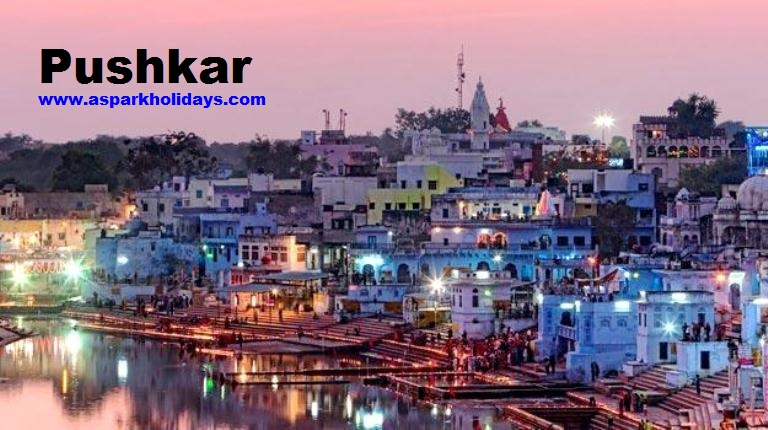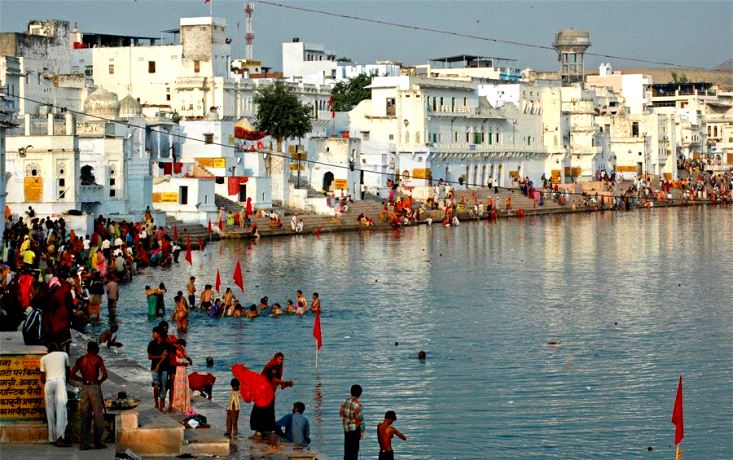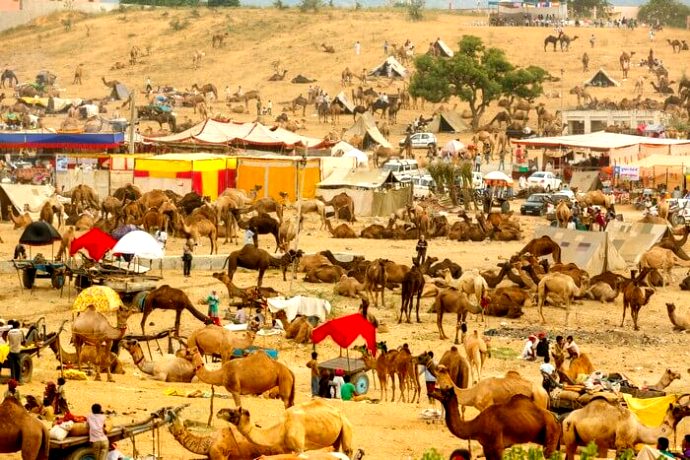
The date of its actual founding is not known, but legend associates Lord Brahma with its creation. It is mentioned that Brahma performed penance here for 60,000 years to have glimpse of Radha Krishna.
The Ramayan mentions Pushkar and says that Vishvamitra performed tapa here. It further says that the Apsara Menaka came to Pushkara to bathe in its sacred waters.
The Mahabharata says that while laying down a programme for Maharaja Yudhishthara travel, Maharaja after entering the Jungles of Sind and crossing the small rivers on the way should bathe in Pushkara". And, as per Vaman Purana, Prahlada on his pilgrimage to holy places visited Pushkarayana.
Pushkar is a fantastic interplay of history and mythology that makes it worthwhile to travel to this holy destination of Rajasthan.
According to lore, the city of Pushkar came into being After a battle between Lord Brahma and a demon named Vajra Nabh. After the demon was killed by Brahma with the help of a lotus flower, three petals floated down to Earth and landed in Pushkar leading to the creation of the three lakes of Pushkar.
Recorded history shows that Pushkar was a favorite retreat of the Mughal rulers, which was later taken over by the Scindias after the eventual decline of the Mughal rule. The Scindias handed over the city to the British thus making Pushkar one of the few places in Rajasthan to be under direct British control, until Independence.
Major Attractions
Brahma Temple- Although the city of Pushkar has 400 odd temples, the Brahma Temple is the most famous of them. Brahma is one of the Hindu trinity Brahma, Vishnu and Maheswar - the three gods representing creation, sustenance and destruction. According to the myths, Brahma is the god of creation of this earth. The four heads symbolizes His presence everywhere.
The most remarkable thing about the Brahma temple is that it is the only one temple on earth dedicated to Lord Brahma. Pushkar literally means a pond created by flowers. Legends have it that Lord Brahma, when wanted to perform a yagna, dropped a lotus to determine the place on earth. That is how Pushkar was created.
Savitri Temple- Savitri Temple in one of the most renowned one out of 400 temples in Pushkar. According to the Hindu mythology Savitri is the first wife of Lord Brahma. When He was all set to start a Yagna on earth in the place of Pushkar (determined by drooping a lotus flower), Savitri's presence was the prerequisite. But She had kept Him waiting. Lord Brahma, irritated at this, married Gayatri the milkmaid to start the yagna on the most auspicious moment.
Infuriated Savitri cursed that Lord Brahma would not be worshiped anywhere else but Pushkar. Hence you find the only temple dedicated to Lord Brahma only in Pushkar.
Varah Temple- Varah Temple in Pushkar is dedicated to Lord Vishnu. One of the various incarnations of Lord Vishnu was that of Varah (boar). The temple worships the Varah form of Lord Vishnu.
You would find ample references of Vishnu in the Hindu myths and legends. In several incarnations which numbers up to as many as 10, Vishnu has appeared on the earth and saved the earth from the hand of the evil.
The temple has a significant historical past. Mughal emperor Aurangzeb destroyed much of the temple because he could not stand with the rather bizarre idol of human body with the head of a boar, housed in the temple.
Later Sawai Jai Singh II, the Maharajah of Jaipur reconstructed the temple. Lord Vishnu is seen as one of the Hindu trinity - Brahma, Vishnu and Maheswar. Vishnu represents the Sustenance of creation while other two gods represents Creation and Destruction.
Mahadeva Temple- Mahadeva Temple in Pushkar is dedicated to Lord Mahadeva. The god is one of the Hindu Trinity that represents Creation, Sustenance and Destruction. According to the Hindu Puranas, Lord Mahadeva is the god of destruction.
There are several myths and legends centering round Lord Mahadeva. Ash-smeared and clad in tiger Skin, He holds a Trishul in his hand and a bull is his pet. According to the legends, the river Ganges has been created from His locks of hair.
Pushkar Lake- Hindu pilgrims come for the holy dip in Pushkar Lake, which is considered most on Kartik Poornima.The highlight of the fair is the Camel Fair, the trading of camels. There are many ghats, which run down to the Holy Pushkar Lake whose waters are famed to wash the sins of a lifetime.
Fun Festive
Camel Fair- Pushkar becomes a bustling and colorful fairground in the month of Kartik (October-November) when the annual Pushkar Fair is held. The highlight of the fair is the Camel Fair, the trading of camels. Camels are bought, sold, decked up and paraded on the sand dunes, presenting a picturesque sight. The camel, horse and donkey races are events that are hugely popular with the tourists. The Pushkar Fair has become a major cultural event in the state of Rajasthan bringing together a large number of villagers from different parts of the state of Rajasthan who display their traditional ware and also make the evenings colorful and festive with music and dance.
Distance from major cities
- Jaipur 140 Kms
- Jodhpur 216 Kms
- Udaipur 311 Kms
How to reach there
- by Air- Jaipur Airport is the nearest Airport to Pushkar
- by Rail- Ajmer Railway Station is the nearest station and well connected with all major cities.
- by Road- Ajmer Bus Stand is well connected by road with Jaipur, Jodhpur & Udaipur with luxury A/c coaches.
Need Aspark Help?
For Tour Packages, Vehicle Rental and Customer Care Support.
+91 9999 31 7846
booking@asparkholidays.comWhy Travel with Us?

Excellent Support
Our Team Available 24x7 for Customer support
Best Price & Savings
We Offer the Most Competitive Prices.


